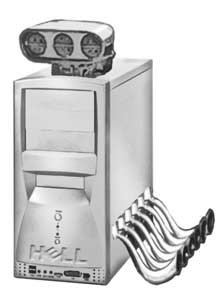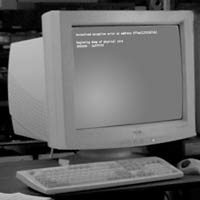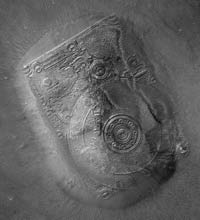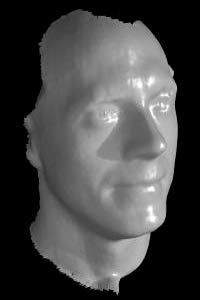Microscoft Files for Patent on Anti-Piracy Technology
Microscoft, long an outspoken opponent of software piracy, filed a patent application Thursday for what they've termed
"Installrot Technology." Illegally produced copies of Installrot-enhanced software, Microscoft claims, can still be
installed on user's computers, but over time they start experiencing mysterious bugs and crashes more
and more frequently. Eventually, Installrot developers hope, the user will become so frustrated that he or she
will have to reinstall the software just to get it to work properly again, perhaps this time from a legitimate copy.
Critics immediately attacked Microscoft's application on technical and legal grounds. Numerous
industry experts pointed out that legitimate copies of their software act exactly the same way, though at least
two or three other industry experts have responded that developing software that requires frequent
re-installation would at least prevent too many people from using any single copy of the software,
whether legal or pirated.
Alpo Computer immediately filed its own competing patent application for the technology,
claiming that they really developed Installrot technology first, or at least stole it
from Xerox's Parc Division before Microscoft got its grubby paws onto it.
Industry analysts have expressed concern that Alpo's patent application is even broader in scope than
Microscoft's and that, if Alpo were to get its way, Microscoft might have to pay royalties to Alpo each time
its software crashes, not merely when it has to be reinstalled.
If such royalty requiriements were upheld in court, it would be cheaper for Microscoft to buy
Alpo Computers outright at its current stock price.
|
|
Hell Computers Introduces New "Hoodscoop" Line of Computer Cases

Hoodscoop technology to cool the processors and graphics cards of tomorrow |
"The average power consumption of modern desktop processors and graphics cards has been increasing by
more than 67% per year" according to Hell spokesman Lucy Furr. "By 2006, we can expect
a typical desktop computer will dissipate more than seven thousand watts just sitting there. Multiprocessor workstations
and high-end gaming systems supporting multiple displays will consume still more power--we estimate an average of
18,500 watts--and give off correspondingly more heat."
|
"In Hell, 'PC' stands for 'Proactive Computing,' and we're designing our PC cases today for the needs of
tomorrow. We were the first computer manufacturer in the central Texas area to supply 2500-watt
power supplies in our standard models, and the second to provide the added-value option of
high-airflow cooling fans to prevent the power supply from melting."
"But it won't be long before computers consume far more than a mere 2500 watts. That's
why we've developed Hoodscoop Technology to ensure that adequate airflow reaches the
parts of your computer that need it the most."
"In a typical case design, air is drawn into the case haphazardly through randomly scattered holes, gaps, and slots, and
then pushed out of the case by a few fans on the back, often placed no more than an inch or two away from the same air holes
which draw the hot air right back into the case. With Hoodscoop Technology the air inlets are isolated
from the case: cool air flows through the intake manifold, passes through a highly-efficient filtration system to remove
airborne dust and contaminants, and is piped straight to the CPU and graphics card. The original beta version also included
a highly sophisticated carburetor to produce a precise and consistent gasoline-air mixture which was then sprayed onto
the CPU heatsink, but this has been removed in the production version, so just forget all that stuff that was in the papers
about our beta test sites exploding."
"Finally, the air is pumped out through stylishly chromed exhaust pipes to a safe distance from the CPU. As long as
no flammable materials or important body parts are near the air outputs, the computer operator will almost certainly be
safe, too. Just remember to replace the air filter regularly with genuine MOPAR filters, and to plug each of the power
supply's nine AC input cables into a separate circuit, and you'll enjoy years of state-of-the-art performance
from your Hell computer."
|
|






